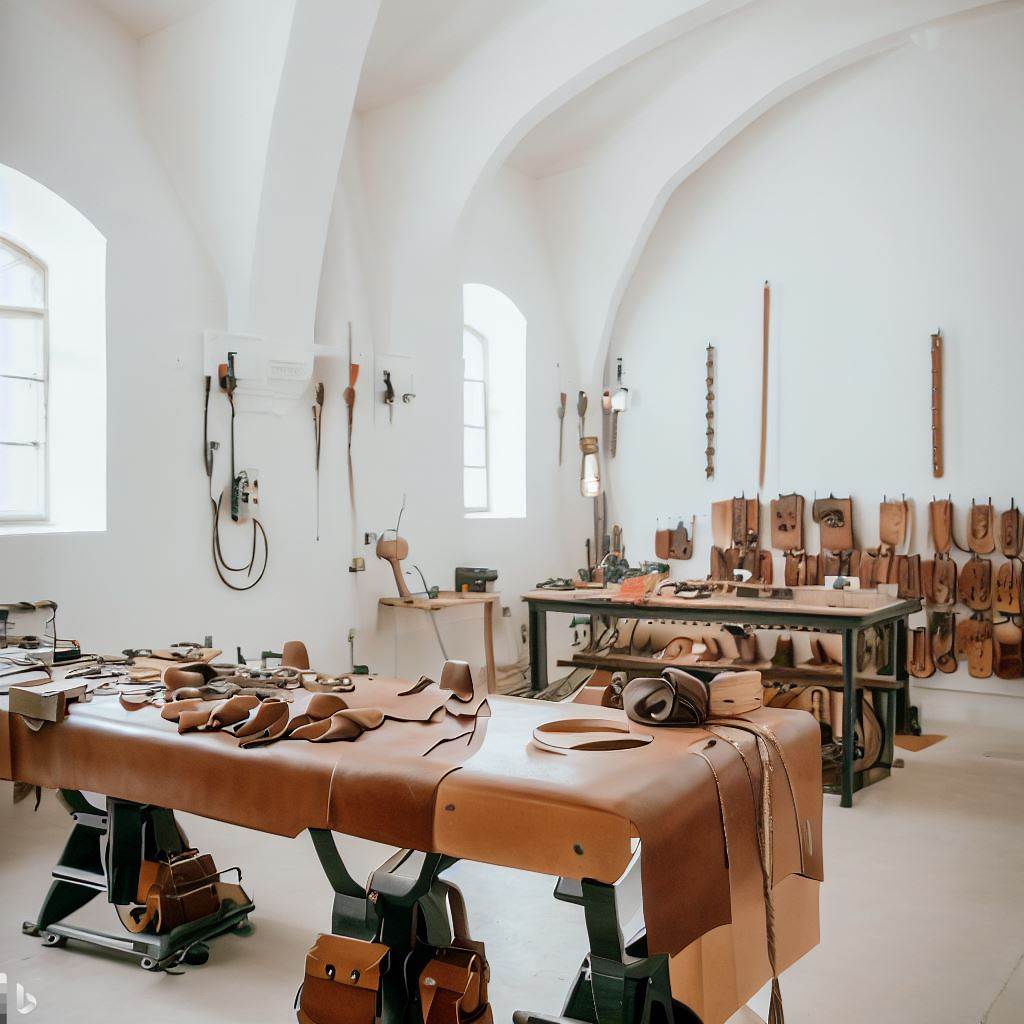Leatherworking Through History: Unraveling Stories in Crafted Art
Prehistoric Leatherwork’s Pivotal Role
Leather’s protective properties were harnessed early in human history for warmth, shelter, and tools. Animal hides provided our ancestors invaluable flexible material.
Evidence shows leatherworking emerged across cultures as early as 5,000 years ago. Prehistoric peoples used flint scrapers and awls to remove fatty tissue from hides and perforate them to stitch crude garments, footwrap, satchels and waterskins supplementing fur.
This technology allowed migration into colder climates while protecting against the elements. Leather became essential to survival and early society’s advancement. Tanning methods improved incrementally through each generation.
Ancient Egyptian Leathercraft Innovations
In Ancient Egypt around 2500 BCE, artisans significantly refined leather production methods allowing creation of luxury status goods alongside utilitarian wares.
Egyptians utilized balms and oils in the tanning process to prevent stiffening and cracking. Fine leather get decorated with gilding and colorful dyes for ornate footwear, gauntlets, aprons and accessorizing mummies of nobility destined for entombment.
This early movement from pragmatic leather craft into decorative artistry would influence leatherworking through the ages as techniques became more sophisticated.
Ancient Roman Mastery and Mass Production
The Roman Empire saw leather tanning and working elevated into thriving mass industries producing gilded military armor, bridles, harnesses, boats, fashion, furniture, and scroll containers on a grand imperial scale.
Assembly line efficiency enabled equipping full legions with standardized leather armor and sandals. Rome industrialized leathercraft, while also developing brilliant innovations like liquefying hide scrap to create a strong, moldable artificial leather.
Roman leather mastery and mass production capacity propelled conquest and trade expansion that spread their leathergoods Europe-wide until the Empire collapsed. But their practical advancements and artistic example influenced leatherwork for centuries after.
Persian Leathercraft Traditions
In Persia, leatherworking blossomed into a revered decorative art form celebrated for ornate embroidery, bright jewel-toned dyes, intricate stamped geometric motifs, and superb craftsmanship. Persia advanced both techniques and aesthetics.
The iconic Persian slipped-stitch embroidery using silk threads to adorn leather horse regalia, bags, garments, and book covers required tremendous skill. Intricate metal embellishments added lavish accents. Leathers get infused with aromatic ambergris tinctures during curing.
Persian leathercraft set the standard for decorative embellishment and saturated vivid dyes that impact Middle Eastern and Indian leather traditions to this day. Their mastery elevated leather’s artistic status.
Medieval Leatherwork in Europe
During the Middle Ages from 500-1400 CE, European leather crafting guilds perfected techniques still used today, including supple deerskin parchment, intricately tooled book covers, embossed chests, and leather armor custom fit for knights.
Building upon Roman coal-pit tanning, chemistries for softening, currying, whitening and dyeing advanced leather quality. Specialized artisans like vellum-makers, bookbinders, cobblers and saddlers organized into guilds passing expertise down to apprentices.
Despite churning innovation, most leatherwork retained traditional painstaking hand-execution. The craft guild system refined expertise across specializations.
Asian Leather Innovations
Meanwhile in Asia around 600 CE, the ancient Chinese invented revolutionary veg tan leather and sophisticated bellows design that allowed oxidizing liquors to penetrate deeper for superior curing. This technology reshaped global leather production.
Innovative Asian tanning nourished vibrant traditions of lacquered leather goods, dragon-motif tooling, and wedge soled footwear still influential today. Asia refined material treatment and decorative techniques still cherished worldwide.
Native American Leather Traditions
Early indigenous peoples of North America were masterful at utilizing all parts of hunted animals. Hides provided material for tepees, parfleches, moccasins, leggings, drums, quivers, bridles, armor, and blankets meticulously decorated using fringe, paint, porcupine quills, beadwork, feathers and more to denote identity and events.
Tanning methods involved scraping brain matter then smoking hides over fires to waterproof without hardening them prior to cutting and decorating garments and accessories. Each tribe perfected locally available techniques. Custom leathers marked status.
Development of Modern Leather Tanning
In the late 1800s, modern chemistry transformed tanning through minerals like chromium that massively accelerated curing times while allowing superior molding and shaping. Oak bark vegetable tanning persisted for fine glove leathers.
Other key innovations included buffing suede napped finishes, machine rolling for consistent thickness, and improved waterproofing using oils and wax emulsions. These advancements enabled durable uniform quality at industrial scales.
Art Deco Leatherwork
The sleek Art Deco design era from 1920-1940s highlighted glossy black leather in geometrically cut clothing, furniture, automobile interiors and decorative objects conveying machine-age modernity through symmetry and streamlining.
Sewing machines allowed intricate construction and topstitching. Leather became a metaphor for industrial progress. Streamlined trains, rocketships and locomotives inspired patterns stamped onto luxury luggage and accessories. Dangerous allure persevered through the gloss.
Contemporary Conceptual Leather Art
Today, some avant garde leatherwork transcends function to express radical social commentary or uncensored ideas using bizarre techniques like vacuum forming, gels, balloon inflation, baking, burning, melting, and growing fungal mycelium with the hides.
Shocking conceptual leather art pushes material boundaries to elicit reactions we cannot ignore. Dominant narratives get challenged. Provocative ambiguity sparks dialogue from discomfort. Irreverence liberates.
The history of leathercraft echoes the human story – from humble utility for survival to demonstrations of class status, identity, and progress. Leather always carved a niche as an elevated material beyond homespun textiles due to its durability, flexibility and natural beauty that comes into its own when meticulously hand worked. Across millennia, leather’s unique receptive surface tempted artisan hands to etch human culture into its fibers. Through their skill across eras, humble hides become enduring canvases for expression that enrich, beguile and inspire.
